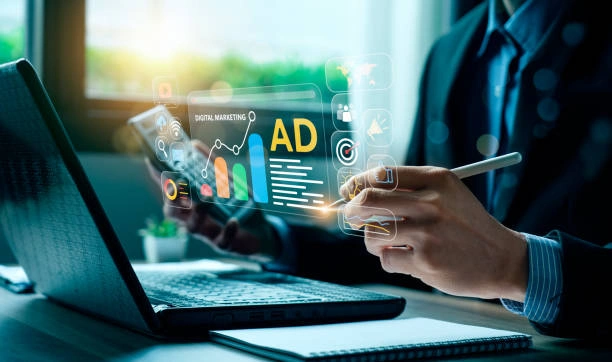Introduction
In today’s fast-paced world, technology is the driving force behind nearly every aspect of our daily lives. From the devices we use to the systems that power our industries, technology shapes how we live, work, and play. This blog post aims to demystify the vast landscape of technology for tech enthusiasts, breaking down its categories and highlighting the latest innovations that are influencing the future. Whether you’re a seasoned tech aficionado or just starting to explore the field, you’ll find valuable insights and practical information here. Let’s dive into the fascinating world of technology and uncover how it’s transforming our reality.
What is Technology?
Defining Technology
At its core, technology refers to the application of scientific knowledge for practical purposes. It’s the sum of techniques, skills, methods, and processes used in the production of goods or services or in the accomplishment of objectives, such as scientific investigation.
The Importance of Technology
Technology is crucial for the advancement of society. It helps solve problems, improves efficiency, and makes life easier. From healthcare and education to entertainment and communication, technology’s impact is profound and far-reaching.

Historical Perspective
The evolution of technology has been marked by significant milestones, such as the invention of the wheel, the printing press, and the internet. Each technological breakthrough has propelled humanity forward, leading to new possibilities and innovations.
Categories of Technology
Information Technology (IT)
Information Technology involves the use of computers and telecommunications to store, retrieve, transmit, and manipulate data. It’s a critical component of modern businesses and personal life, encompassing hardware, software, networks, and databases.
Communication Technology
This category includes technologies that facilitate communication between individuals and organizations. Examples include smartphones, social media platforms, and video conferencing tools. Communication technology has revolutionized how we connect with others, making the world more accessible.
Medical Technology
Medical technology focuses on improving healthcare delivery through the use of advanced equipment and procedures. Innovations in this field include diagnostic devices, robotic surgery, telemedicine, and personalized medicine, all of which enhance patient care and outcomes.
Emerging Technologies
Artificial Intelligence (AI)
Artificial Intelligence involves the creation of systems that can perform tasks typically requiring human intelligence. These tasks include learning, reasoning, problem-solving, and understanding language. AI is being integrated into various industries, from healthcare to finance, to enhance decision-making and efficiency.
Machine Learning
A subset of AI, machine learning, enables systems to learn and improve from experience without explicit programming. It’s used in applications such as recommendation engines, fraud detection, and predictive analytics, helping organizations gain insights and automate processes.
Blockchain Technology
Blockchain is a decentralized digital ledger that records transactions across multiple computers. It’s the foundation of cryptocurrencies like Bitcoin and has potential applications in areas such as supply chain management, voting systems, and secure data sharing.
The Internet of Things (IoT)
What is IoT?
The Internet of Things (IoT) refers to the network of interconnected devices that communicate and exchange data. These devices range from household appliances to industrial machinery, all connected to the internet to enhance functionality and efficiency.
Applications of IoT
IoT has numerous applications, including smart homes, wearable technology, and industrial automation. In smart homes, IoT devices like smart thermostats and security systems provide convenience and energy savings. In industries, IoT enables real-time monitoring and predictive maintenance of equipment.
Challenges and Opportunities
While IoT offers significant benefits, it also presents challenges such as security vulnerabilities and data privacy concerns. Addressing these issues is crucial for the continued growth and adoption of IoT technologies.
Virtual and Augmented Reality
Virtual Reality (VR)
Virtual Reality creates immersive, computer-generated environments that simulate physical presence. It’s used in gaming, training simulations, and virtual tours, providing users with engaging and interactive experiences.
Augmented Reality (AR)
Augmented Reality overlays digital information onto the real world, enhancing the user’s perception of their environment. Applications of AR include navigation systems, educational tools, and retail experiences, offering new ways to interact with information and objects.
Future Prospects
The future of VR and AR is promising, with advancements in hardware and software making these technologies more accessible and effective. Continued innovation will lead to new applications and improved user experiences.
Robotics and Automation
The Role of Robotics
Robotics involves the design, construction, and operation of robots, which are used in various industries for tasks ranging from manufacturing to healthcare. Robots can perform repetitive, dangerous, or precise tasks with high accuracy and efficiency.
Types of Robots
There are different types of robots, including industrial robots, service robots, and autonomous vehicles. Industrial robots are used in manufacturing processes, service robots assist with tasks like cleaning and delivery, and autonomous vehicles include self-driving cars and drones.
Impact on Employment
While robotics and automation can displace certain jobs, they also create new opportunities in fields like robot programming, maintenance, and AI development. The key is to adapt and reskill to stay relevant in the evolving job market.
Renewable Energy Technologies
Solar Power
Solar power harnesses energy from the sun using photovoltaic cells. It’s a clean and renewable source of energy that reduces greenhouse gas emissions and dependence on fossil fuels.
Wind Energy
Wind energy is generated using wind turbines that convert kinetic energy from the wind into electricity. It’s another sustainable energy source that contributes to reducing carbon footprints.
Advancements in Renewable Energy
Technological advancements are making renewable energy sources more efficient and cost-effective. Innovations in energy storage and grid integration are also enhancing the reliability and scalability of renewable energy.
Cybersecurity
Importance of Cybersecurity
Cybersecurity involves protecting computer systems and networks from cyber threats such as hacking, malware, and data breaches. It’s essential for safeguarding sensitive information and maintaining trust in digital systems.
Common Threats
Cyber threats include phishing attacks, ransomware, and denial-of-service (DoS) attacks. These threats can compromise data integrity, disrupt operations, and cause financial losses.
Best Practices
Implementing strong security measures, such as firewalls, encryption, and multi-factor authentication, can help protect against cyber threats. Regular training and awareness programs are also crucial for maintaining cybersecurity.
Biotechnology
What is Biotechnology?
Biotechnology involves using living organisms and biological systems to develop products and technologies that improve human life. It spans fields such as medicine, agriculture, and environmental science.
Medical Biotechnology
In medicine, biotechnology has led to advancements like gene therapy, personalized medicine, and regenerative medicine. These innovations offer new treatment options and improve patient outcomes.
Agricultural Biotechnology
Agricultural biotechnology includes the development of genetically modified crops that are more resistant to pests and diseases. It also involves techniques for improving crop yields and sustainability.
Fintech
Financial Technology Explained
Financial technology, or fintech, refers to the use of technology to deliver financial services. It encompasses digital payments, online banking, and blockchain-based solutions.
Popular Fintech Solutions
Fintech solutions include mobile payment apps, peer-to-peer lending platforms, and robo-advisors for investment management. These technologies offer convenience, accessibility, and cost savings for consumers and businesses.
The Future of Fintech
The fintech industry is rapidly evolving, with innovations like open banking, decentralized finance (DeFi), and digital currencies shaping the future of financial services. These advancements promise to enhance financial inclusion and democratize access to financial resources.
Technology is an integral part of our lives, driving progress and innovation across various sectors. From AI and IoT to renewable energy and cybersecurity, the diverse categories of technology offer endless opportunities for growth and improvement. As tech enthusiasts, staying informed about the latest developments and trends is crucial for leveraging these advancements effectively. Whether you’re exploring new gadgets or implementing cutting-edge solutions in your business, technology continues to transform the way we live and work. To further enhance your tech knowledge and stay ahead of the curve, consider subscribing to our newsletter or joining our community of like-minded individuals. Together, let’s continue discovering and harnessing the power of technology to shape a better future.








